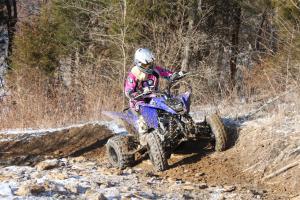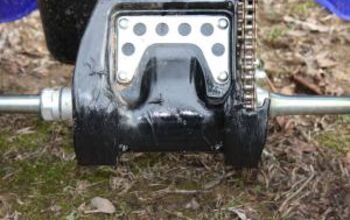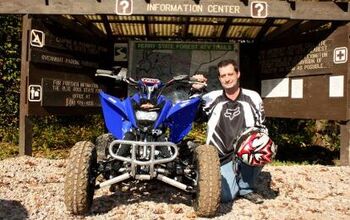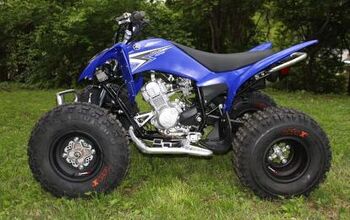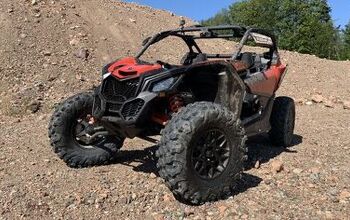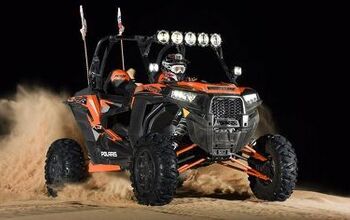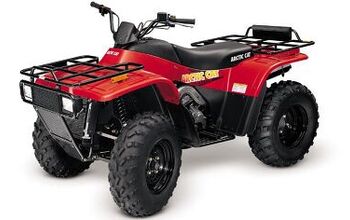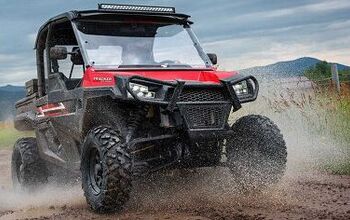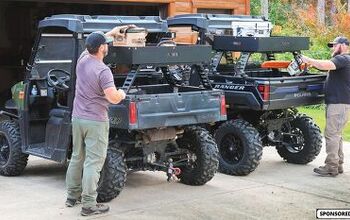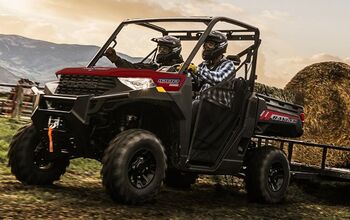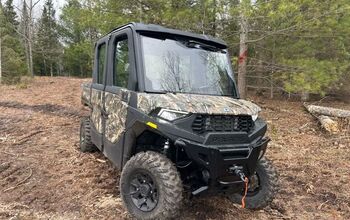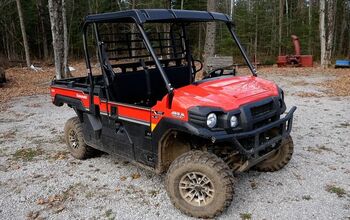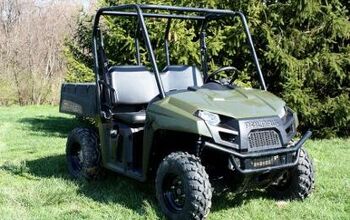2011 Yamaha Raptor 125 Trail Review
ATV.com and Yamaha are teaming up to give away a 2011 Yamaha Raptor 125 to one of our readers. This is the first in a four-part series on the newest Raptor. In future articles we’ll compare it to another 125cc sport quad and add a host of bolt-on items to make this machine even more fun and functional. Click here for the more information on the Yamaha Raptor 125 Contest.
A few months back we traveled to Ventura, Calif., home of Ventura County Speedway to test the all new 2011 Yamaha Raptor 125. Yamaha built this ATV to provide a fun and affordable machine for beginners to learn on and provide a stepping stone for riders who had outgrown their mini quads, yet weren’t large or experienced enough for the Raptor 250.
2011 Yamaha Raptor 125
As you may have noticed from our first review, we are quite enthusiastic about this model. Having tested the Raptor at Ventura County Speedway on a track built specifically by Yamaha to bring out the best this machine had to offer, we felt it was imperative that we acquire a unit for a more real world test to see how the little 125 performs in less then ideal conditions.
We took the Raptor 125 to the trails on a cool winter day in Kentucky.
For our trail test we picked up a brand new Raptor 125 from Beechmont Motorsports in Cincinnati, Ohio and headed to Big Rock Off-Road Park in Maysville, Ky. The park is privately owned and sprawls over 1200 acres of Kentucky hillsides.
To put the machine to the test we acquired the services of test riders Justin Flaugher who races motocross aboard a Raptor 250 and Meleny Strode, AMA District 15 85cc Women’s Champion. With both of our riders weighing in around 100 pounds we were given to opportunity to see how the Raptor performed with some lighter riders on board.
Although temperatures were well below freezing, the Raptor 125 fired up easily, though it did take several minutes to warm up and run happily. With its limited displacement we were a bit apprehensive about the Raptor’s trail capabilities. However, the little 124cc air cooled four stroke pleasantly surprised us.
The Raptor 125 is happiest when it’s being revved aggressively.
Good low-end power makes takeoffs easy on the Raptor and there was enough power to rip along flat trails working its way up through the gearbox. In fifth gear the Raptor is capable of enough speed to allow it to keep up with many larger displacement machines.
The Raptor’s two-valve single overhead cam engine likes to be revved and pulls hardest in the upper midrange. While we wouldn’t call it a hit, there is a noticeable surge of power in the upper midrange before the machine tapers off on top.
For a 125 the Raptor is a capable climber. Its smooth-shifting manual transmission and adequate power make climbing most hills surprisingly easy. We used second gear on smooth, moderate inclines and shifted down to first for steeper rock-strewn trails. Once its time to head back down the hill, the Raptor’s manual transmission greatly enhances rider control by allowing you to stick the machine in a lower gear and use engine braking to help control the machine’s momentum. That’s a very cool feature you won’t find on any small bore sport ATVs with automatic transmissions.
Despite its low displacement, the Raptor 125 proved to be a competent climber.
Equipped with the same suspension as the Raptor 250, the 31-pound lighter Raptor 125 provides very capable suspension. The machine rides smoothly over trails strewn with fist-size rocks sticking out of the frozen earth. Its excellent suspension was a real asset on steep rock-strewn climbs where momentum was key due to the slippery conditions. Our test riders were hitting 6- to 8-inch rocks and doing a remarkable job of holding their lines thanks to the Raptor’s suspension. On mildly whooped out fast trails the shocks responded well, keeping the tires in contact with the ground. We already knew the shocks could handle some air time from our test at Ventura and the shocks definitely proved to be trail worthy at Big Rock.
You can really see Yamaha quality in the details. Top notch fit and finish and chassis geometry set the Raptor 125 apart from a sea of lower-quality imports.
Yamaha really got the geometry right on this chassis. Combined with its capable suspension, the Raptor’s handling really shines out on the trail. Most notable is how stable and predictable it is through the turns despite its narrow track of 40 inches. The Raptor 125 also sports a low seat height of 20.9 inches and 18-inch rear Maxxis tires, which help give the Raptor a low center of gravity. Its good stability and narrower width are complemented by precise steering, which makes picking your way through tight, technical trails much easier. As the trails opened up and our riders started pushing the limits of the machine’s speed, the Raptor remained stable and predictable.
We were impressed with the Raptor’s stopping power while racing turn to turn at Ventura and that carried over to our trail test as well. The Raptor’s brakes can easily stop 240-pound adults. For lighter riders it is like having YFZ450R quality binders. The brakes have good power and progression at both ends, offering superb feel and control. Descending big hills is no problem for the Raptor’s brakes.
Maxxis tires offer sure-footed performance, though their small size does result in limited ground clearance.
The Raptor’s light 18-inch rear and 19-inch front Maxxis tires do unfortunately trade in some ground clearance for their lighter weight and smaller size. We put some serious wear and tear on the swingarm’s skid plate on some of Big Rock’s big rocks. But our test riders never managed to get completely high centered thanks to the machine’s narrower stance. If you ride in lots of rocks, plan on adding an aftermarket skid plate and perhaps some slightly larger tires.
Tire performance was otherwise pretty good. The tires did a good job of finding traction on the frozen trails and the slightly rounded rear tires helped soak up the smallest trail junk without feeling bouncy.
Both of our test riders felt right at home on the Raptor. Good ergonomics lend themselves to every aspect of a machine’s performance and the Raptor has a very comfortable cockpit that is ideal for small teenagers. As we have proven, though, riders over six-feet tall can still ride the machine pretty comfortably.
One of the coolest things about the Raptor 125 is that in spite of the fact that you are riding a small ATV, you never feel like you are riding a cheap little quad. The Raptor has all of the quality and craftsmanship that Yamaha is known for. Its quality of components is as good as those found throughout the Raptor line, so you know you are purchasing a machine that can be handed down to the next generation of riders coming up in your family. Or should you decide to sell it in the future it will do a far better job of holding its resale value compared to the vast majority of the off-brand machines polluting the used ATV market.
After a day of ripping around on the Raptor 125 at Big Rock, any doubts we had about its off-road capabilities were gone. Yamaha’s Raptor 125 is a real trail machine with capabilities that exceeded our expectations.
Related Reading
More by ATV.com Staff




